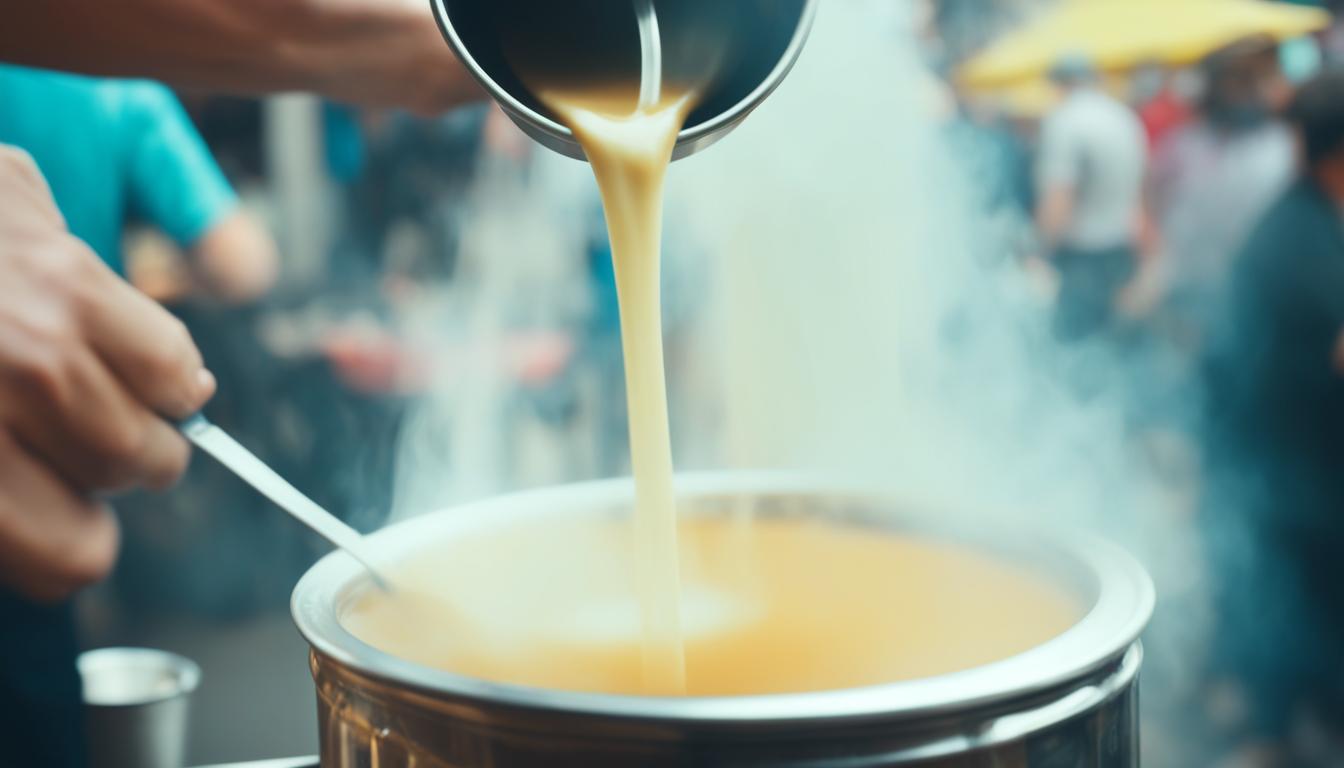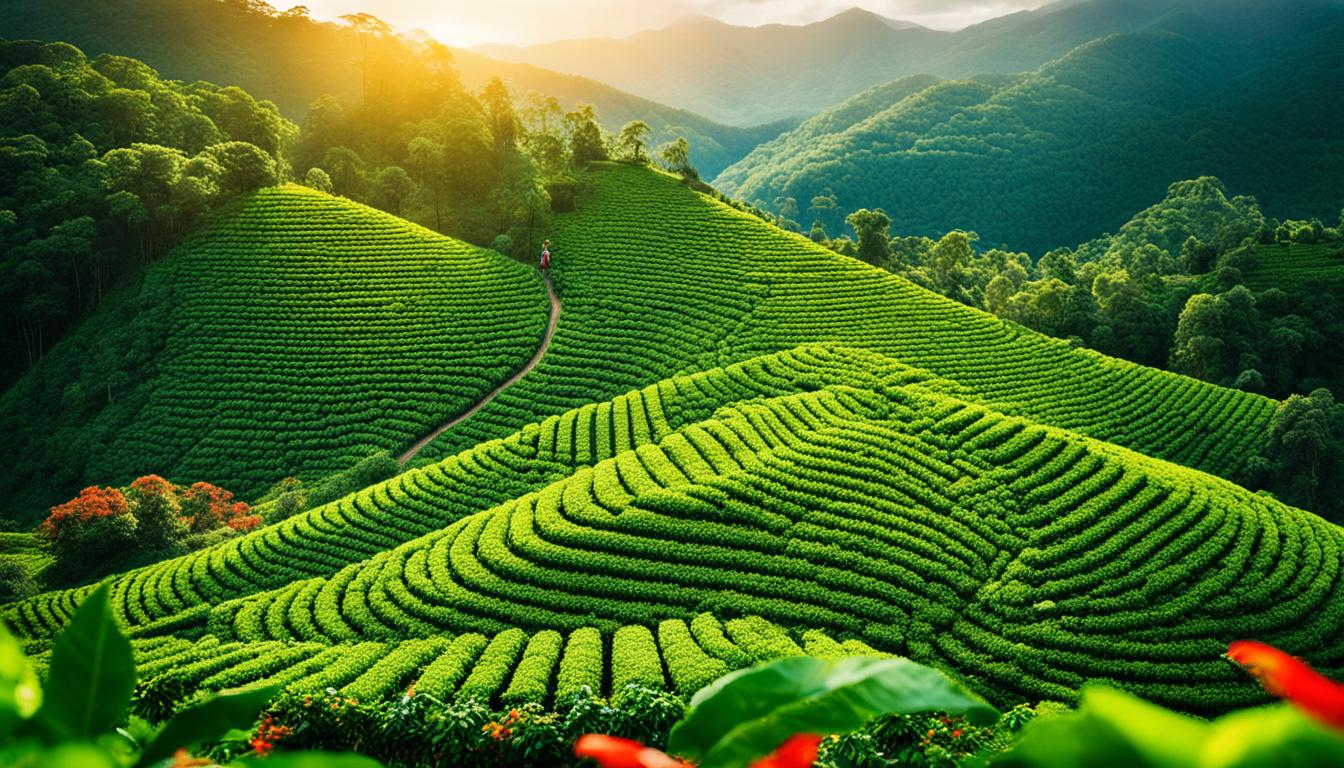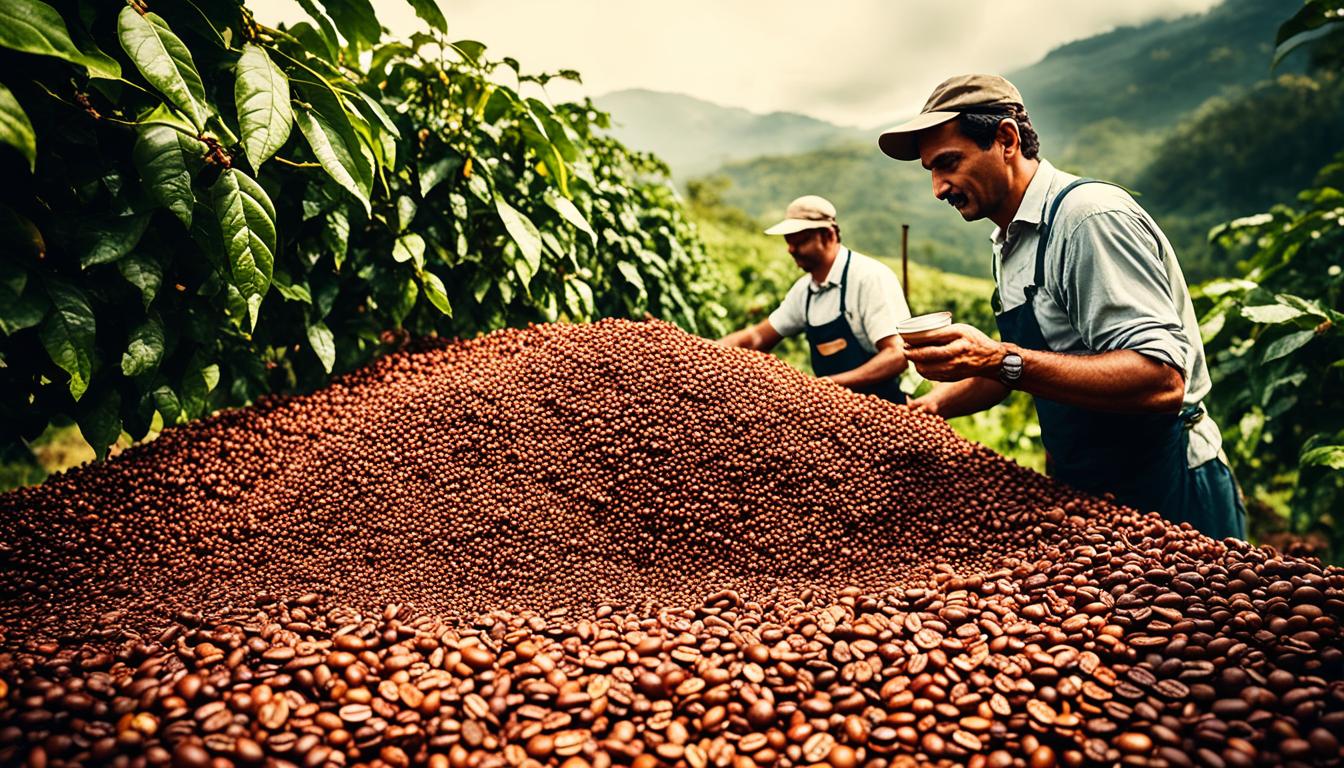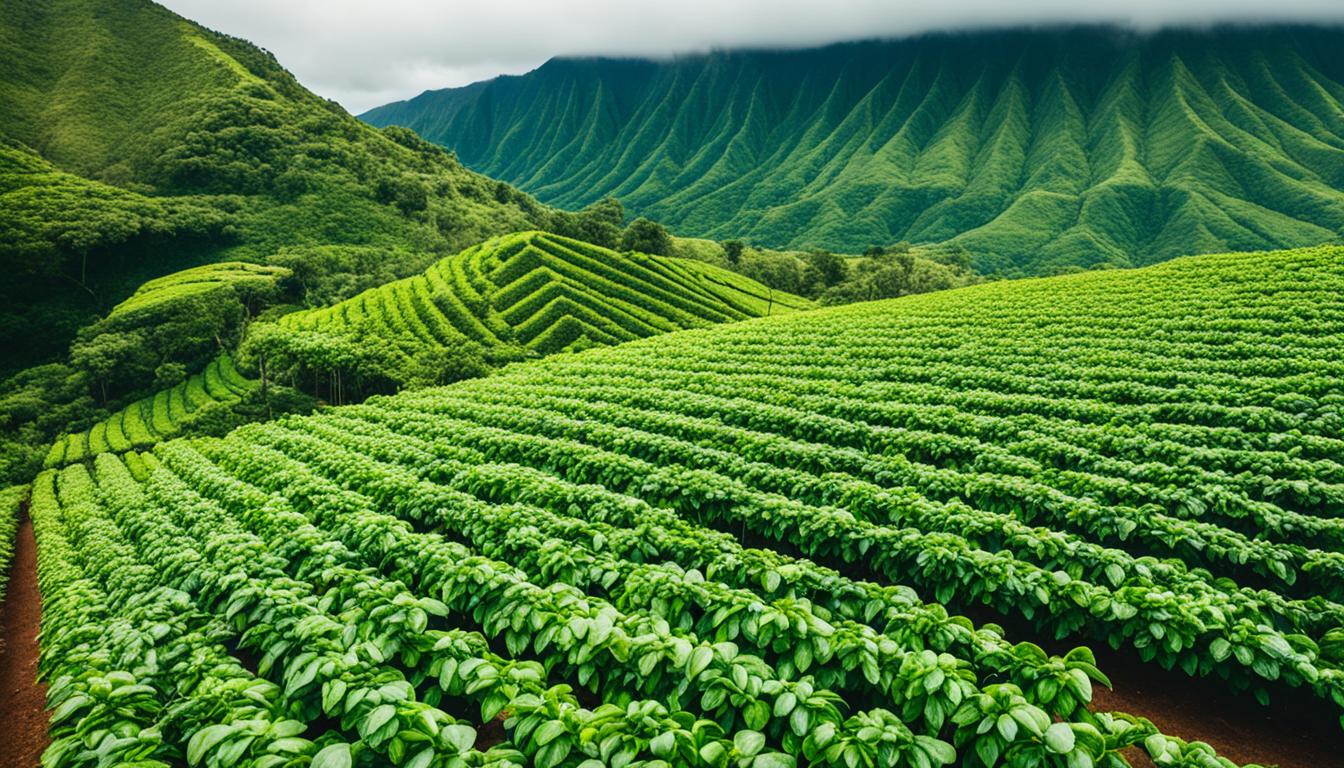Welcome to our journey into the captivating world of Vietnamese coffee tradition. In this article, we will explore the rich history, unique brewing methods, and delightful flavors that make Vietnamese coffee a beloved part of the country’s cultural heritage.
Vietnamese coffee culture has deep roots, dating back to the French colonial period in the late 19th century. Since then, it has flourished and evolved into a vibrant part of everyday life in Vietnam. Today, Vietnam stands as the second-largest coffee producer globally, renowned for its distinct coffee offerings.
Key Takeaways:
- Vietnamese coffee tradition has a rich history rooted in the French colonial period.
- Vietnam is the second-largest coffee producer in the world.
- Distinctive brewing methods, such as the phin filter, contribute to the unique flavors of Vietnamese coffee.
- Vietnamese coffee beans are predominantly robusta, known for their boldness and earthy flavors.
- Popular Vietnamese coffee drinks include ca phe sua da (iced coffee with condensed milk) and egg coffee.
The History and Origins of Vietnamese Coffee
During the French colonial period in the late 19th century, French missionaries introduced coffee to Vietnam. The fertile highlands of the country, especially the Central Highlands region, provided ideal conditions for coffee cultivation. This marked the beginning of the history of Vietnamese coffee, which quickly gained popularity among the locals and became deeply integrated into the country’s culture and traditions.
Vietnam’s coffee industry has weathered various challenges, including wars and economic hardships, but has managed to thrive over the years. Today, Vietnam is the second-largest coffee producer in the world, with coffee cultivation playing a significant role in its economy.
The French colonial influence had a lasting impact on the Vietnamese coffee industry, shaping its unique characteristics and brewing methods. Vietnamese coffee is known for its distinct flavor profile and craftsmanship, which has garnered international recognition and created a loyal following worldwide.
The image above showcases the rich history and origins of Vietnamese coffee, highlighting its connection to the French colonial period and the subsequent coffee cultivation in Vietnam.
Traditional Vietnamese Coffee Preparation Methods
When it comes to enjoying traditional Vietnamese coffee, the brewing method plays a vital role in delivering a rich and flavorful cup. One of the most distinctive aspects of Vietnamese coffee culture is the use of a small metal drip filter called a “phin.” This unique brewing device allows for a slow and controlled extraction process, resulting in a smooth and satisfying beverage.
The phin filter consists of several parts, including a perforated insert and a screw-on lid. To brew coffee using a phin filter, start by placing the filter on top of a cup or glass. Next, add sweetened condensed milk to the cup, which provides the signature creamy sweetness that complements the strong Vietnamese coffee.
After adding condensed milk, the next step is to add coffee grounds into the phin filter. Vietnamese coffee is typically made using finely ground dark-roasted beans, which adds depth and intensity to the flavor profile.
Once the coffee grounds are in the filter, slowly pour hot water into the filter chamber, allowing it to drip through the coffee and into the cup below. The slow drip process enhances the extraction, extracting the full flavor and aroma from the beans.
The result is a beautifully layered, balanced cup of coffee that combines the rich flavors of dark-roasted beans with the creamy sweetness of condensed milk. It’s a unique and delightful experience that truly captures the essence of traditional Vietnamese coffee.
The Phin Filter Process
The process of brewing coffee with a phin filter can be visually captivating. As the hot water drips through the coffee grounds, the deep, dark color gradually fills the cup, creating a mesmerizing display. This slow and deliberate method of brewing not only produces a delicious beverage but also allows for a more mindful and enjoyable coffee experience.
“Using a phin filter to brew Vietnamese coffee is a delightful ritual that captures the essence of the country’s coffee culture. The slow extraction process creates a flavorful and aromatic cup that is truly satisfying.” – Coffee enthusiast
| Advantages of Using a Phin Filter for Vietnamese Coffee Brewing | Disadvantages of Using a Phin Filter for Vietnamese Coffee Brewing |
|---|---|
| – Controlled extraction for a rich and flavorful cup | – Requires patience and time for the brewing process |
| – Portable and easy to use | – Limited volume capacity |
| – Enhances the aroma and flavor of the coffee | – May require practice to achieve desired taste |
Overall, the phin filter is an essential tool in the preparation of traditional Vietnamese coffee. Its unique design and slow drip process allow coffee enthusiasts to savor every sip, experiencing the rich flavors and aromas that make Vietnamese coffee special.
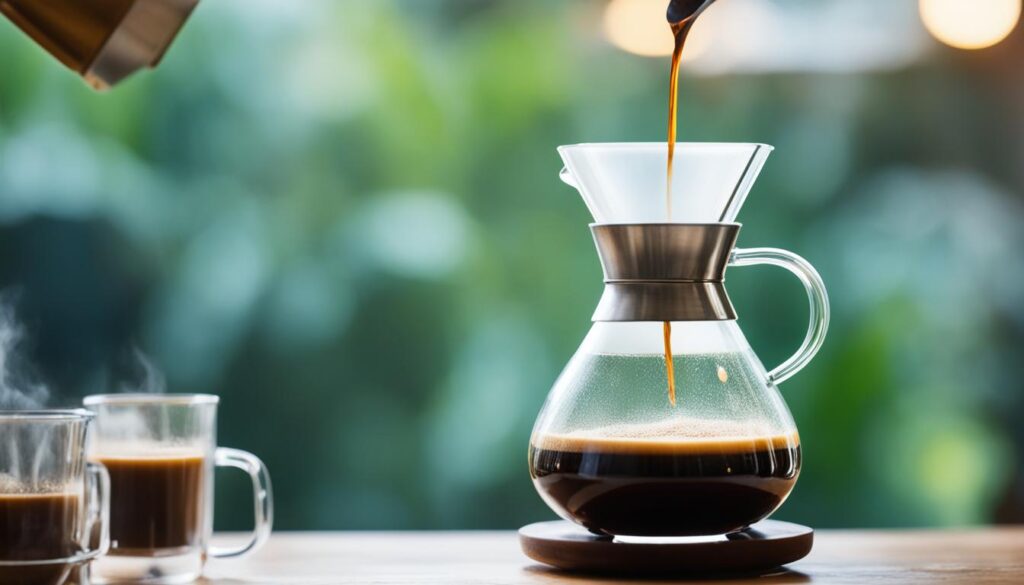
Unique Characteristics of Vietnamese Coffee Beans
Vietnamese coffee beans are known for their unique flavor profile and boldness. Predominantly of the robusta variety, these beans possess distinctive characteristics that set them apart from other varieties.
The flavor of Vietnamese coffee beans can be described as earthy, chocolatey, and nutty, providing a rich and satisfying taste experience. This flavor profile is a result of the high altitude and rich volcanic soil in the Central Highlands of Vietnam, where the majority of coffee is cultivated.
The Central Highlands region’s high elevation and volcanic soil create optimal conditions for the growth of robusta beans, enhancing their flavor and aroma. The beans’ exposure to these natural elements contributes to their unique taste, making them highly sought after among coffee enthusiasts.
Furthermore, Vietnamese coffee beans are often processed using the wet method, which involves removing the outer cherry to reveal the beans inside. This method allows the beans to retain more of their natural flavors and oils, further enhancing the complexity of their taste profile.
Whether enjoyed as a traditional drip coffee or as the base for popular Vietnamese coffee drinks, the unique characteristics of Vietnamese coffee beans ensure a distinct and flavorful cup of coffee.
Comparison of Vietnamese Coffee Beans with Other Varieties
| Flavor Profile | Strength | |
|---|---|---|
| Vietnamese Coffee Beans | Earthy, chocolatey, nutty | Strong and bold |
| Arabica Coffee Beans | Sweet, fruity, floral | Mild to medium |
| Robusta Coffee Beans | Bitter, earthy, woody | Strong and full-bodied |
Popular Types of Vietnamese Coffee Drinks
Vietnamese coffee culture offers a wide variety of coffee drinks to suit every taste. Whether you prefer a refreshing iced beverage or a rich, indulgent concoction, there is something for everyone in the world of Vietnamese coffee.
One of the most famous Vietnamese coffee drinks is ca phe sua da, also known as Vietnamese iced coffee. This delightful beverage combines strong black coffee with sweetened condensed milk, creating a perfect balance of flavors. The coffee is brewed using a traditional Vietnamese drip filter, known as a phin, and then poured over a glass filled with ice and condensed milk. The result is a smooth and creamy iced coffee that is both refreshing and satisfying.
If you’re in the mood for something indulgent, look no further than egg coffee. This unique drink is made by pouring a rich and velvety egg yolk custard over a cup of strong black coffee. The combination of the creamy custard and the robust coffee creates a delightful contrast of flavors and textures. Egg coffee is often enjoyed as a decadent treat or dessert, and it has become a popular choice among locals and tourists alike.
Vietnamese coffee can also be enjoyed with added ingredients to create different flavor profiles. For example, coconut milk can be added to the coffee for a tropical twist, while yogurt can provide a tangy and creamy texture. Additionally, chocolate lovers can opt for a mocha variation by adding chocolate syrup or cocoa powder to their coffee.
| Vietnamese Coffee Drink | Description |
|---|---|
| Ca phe sua da | A refreshing iced coffee made with sweetened condensed milk |
| Egg coffee | A creamy and indulgent drink made with a rich egg yolk custard poured over strong black coffee |
| Coconut coffee | A tropical twist on Vietnamese coffee, made with added coconut milk |
| Yogurt coffee | A tangy and creamy variation of Vietnamese coffee made with yogurt |
| Mocha coffee | A chocolate-infused Vietnamese coffee made with chocolate syrup or cocoa powder |
Whether you prefer the classic Vietnamese iced coffee or want to try something new and adventurous like egg coffee, there is no shortage of options to satisfy your coffee cravings in Vietnam.
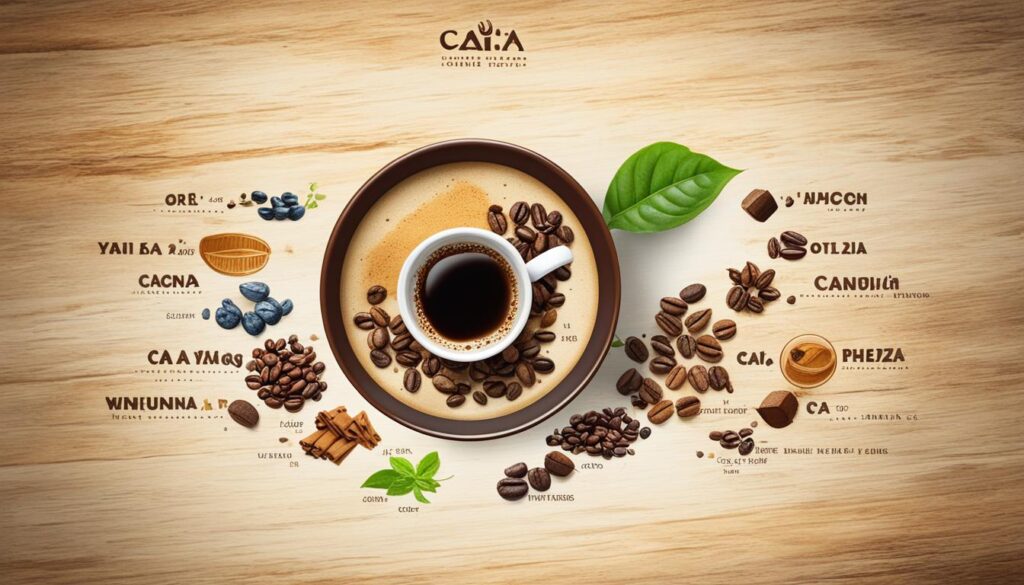
Vietnamese Coffee Shops and Their Ambiance
Vietnamese coffee shops, known as “ca phe,” are an integral part of our country’s vibrant coffee culture. These establishments offer a unique experience with their diverse atmospheres and charming ambiances. From quaint sidewalk cafes to chic modern coffee houses, each venue has its own distinct character and charm.
Traditional Vietnamese coffee shops exude a cozy and inviting vibe, often featuring wooden furniture, warm lighting, and rustic decorations. The aroma of freshly brewed coffee permeates the air, creating a comforting and nostalgic ambiance. These traditional cafes provide a perfect setting to savor a cup of rich Vietnamese coffee while immersing oneself in the local culture.
In contrast, modern Vietnamese coffee shops are designed for the aesthetically inclined. These trendy establishments emphasize sleek interiors, contemporary decor, and innovative brewing techniques. From minimalist designs to eye-catching murals, these cafes offer a visually stimulating environment that appeals to the younger generation.
More than just a place to grab a cup of joe, Vietnamese cafes serve as vibrant social hubs where friends and strangers gather to connect, relax, and enjoy the art of coffee. Whether it’s diving into a good book, engaging in conversations, or simply people-watching, these coffee shops provide a welcoming space for both locals and travelers to experience the unique ambiance and culture of Vietnamese coffee.
FAQ
What is the history of Vietnamese coffee?
Vietnamese coffee has a rich history that dates back to the French colonial period in the late 19th century when French missionaries introduced coffee to Vietnam. Since then, it has become immensely popular among the locals and Vietnam has now become the second-largest coffee producer in the world.
How is traditional Vietnamese coffee prepared?
Traditional Vietnamese coffee is brewed using a small metal drip filter called a “phin.” The phin is placed on top of a cup or glass, then sweetened condensed milk is added followed by coffee grounds and hot water. The slow drip process creates a smooth and creamy beverage.
What are the unique characteristics of Vietnamese coffee beans?
Vietnamese coffee beans are predominantly of the robusta variety, known for their strength and boldness. They have a distinctive flavor profile described as earthy, chocolatey, and nutty. The high altitude and rich volcanic soil of the Central Highlands contribute to the unique characteristics of Vietnamese coffee beans.
What are some popular types of Vietnamese coffee drinks?
One of the most famous Vietnamese coffee drinks is ca phe sua da, an iced coffee made with sweetened condensed milk. Another popular choice is egg coffee, a creamy and indulgent drink made with a rich egg yolk custard poured over strong black coffee. Vietnamese coffee can also be enjoyed with added ingredients like coconut milk, yogurt, or chocolate, offering different flavor profiles and experiences.
What can I expect from Vietnamese coffee shops?
Vietnamese coffee shops, known as “ca phe,” offer a unique ambiance and charm. From humble sidewalk cafes to elegant establishments, these coffee shops serve as social hubs where people gather to relax, connect, and enjoy the art of coffee. Whether traditional or modern, each coffee shop has its own special atmosphere and often showcases innovative brewing techniques.

